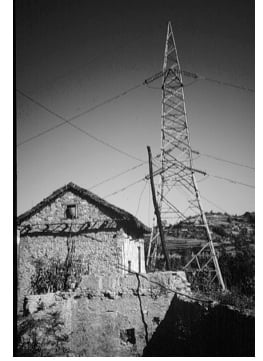Parameters not working[edit source]
Please note that a couple of parameters do not work. This comment is only to document it.
1. Parameter more does not remove the item[edit source]

It was in London in 1882 that the Edison Company first produced electricity centrally that could be delivered to customers via a distribution network or 'grid'. Since then electricity has become one of the commonest energy sources for domestic use in the West. Electricity is extremely versatile, clean, easy to use, and can be turned on or off at the flick of a switch. Electricity has brought enormous social benefits in all areas of life. It is the preferred method of supplying power for many household applications, especially lighting, but connection to the national electrical grid is a rare occurrence in rural areas of the developing and under developed world. In the majority of the worlds' poorer countries it is estimated that significantly less than 5% of the rural population are connected to the national grid. There are many reasons, both technical and economic, which make grid connection unfeasible and these will be looked at briefly in this fact sheet. In urban areas of the developing world grid connection is commonplace.
There are other possibilities for providing electricity in rural areas. In many areas where electricity is required and there is no grid within easy reach then a localised grid (or micro- grid) can be established using a local power source such as a diesel generator set or small- scale hydro power scheme. Alternatively, individual households can be connected to stand- alone systems which can be powered by any of a wide variety of energy sources.
2. Parameter inline does not show content inline[edit source]

It was in London in 1882 that the Edison Company first produced electricity centrally that could be delivered to customers via a distribution network or 'grid'. Since then electricity has become one of the commonest energy sources for domestic use in the West. Electricity is extremely versatile, clean, easy to use, and can be turned on or off at the flick of a switch. Electricity has brought enormous social benefits in all areas of life. It is the preferred method of supplying power for many household applications, especially lighting, but connection to the national electrical grid is a rare occurrence in rural areas of the developing and under developed world. In the majority of the worlds' poorer countries it is estimated that significantly less than 5% of the rural population are connected to the national grid. There are many reasons, both technical and economic, which make grid connection unfeasible and these will be looked at briefly in this fact sheet. In urban areas of the developing world grid connection is commonplace.
There are other possibilities for providing electricity in rural areas. In many areas where electricity is required and there is no grid within easy reach then a localised grid (or micro- grid) can be established using a local power source such as a diesel generator set or small- scale hydro power scheme. Alternatively, individual households can be connected to stand- alone systems which can be powered by any of a wide variety of energy sources.